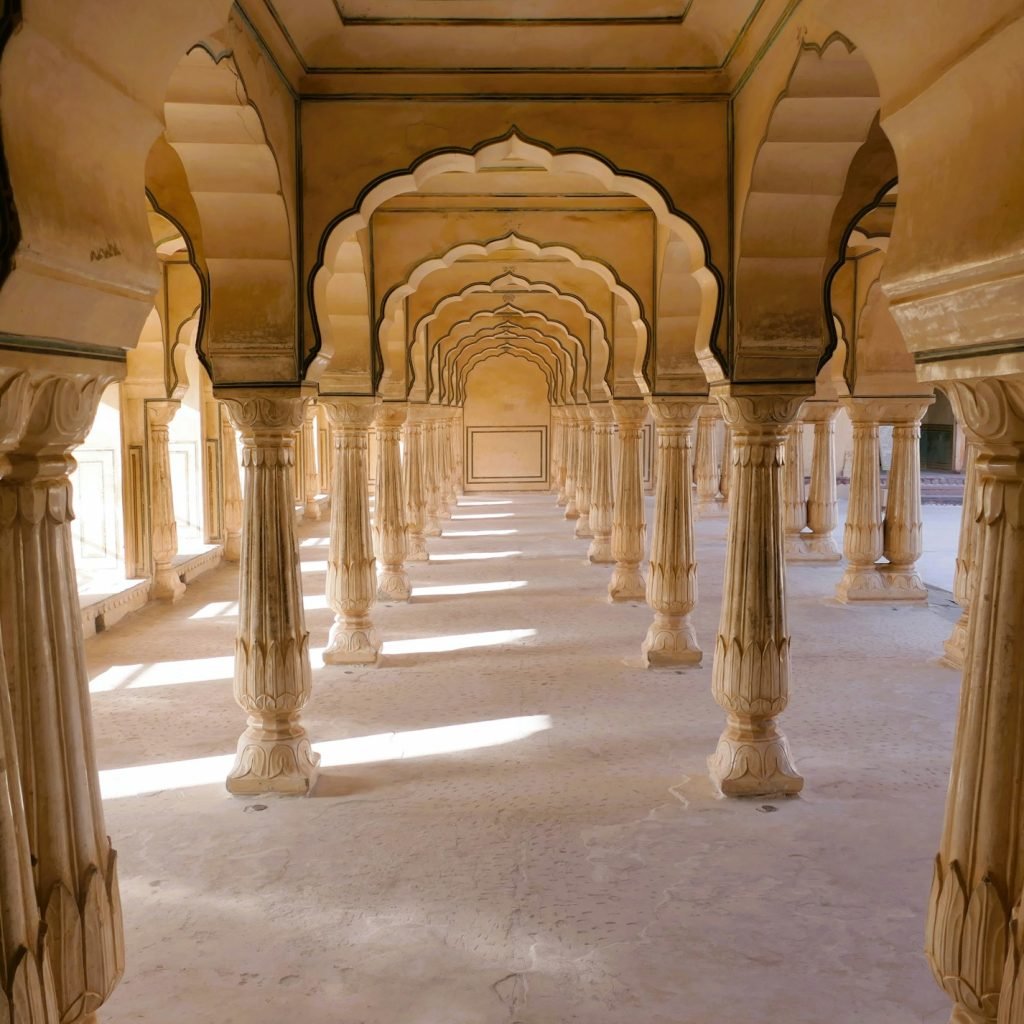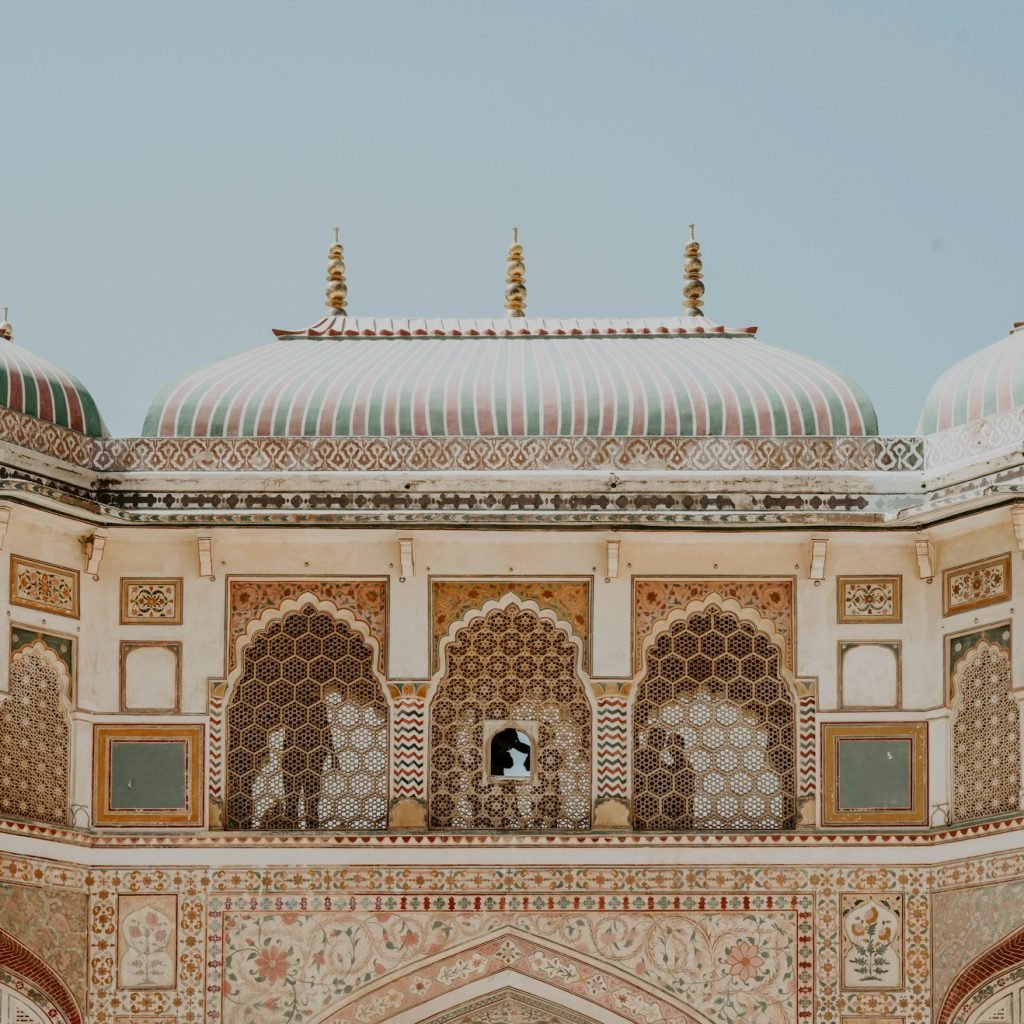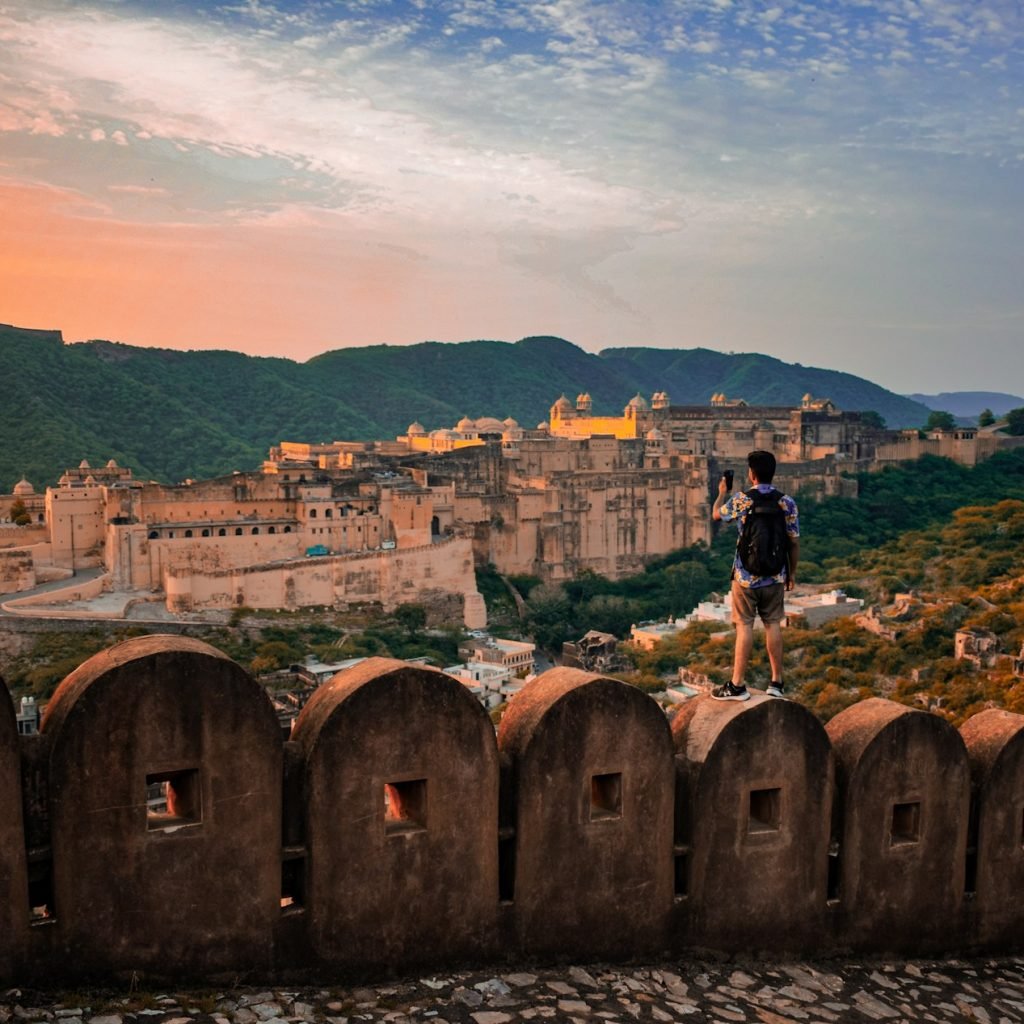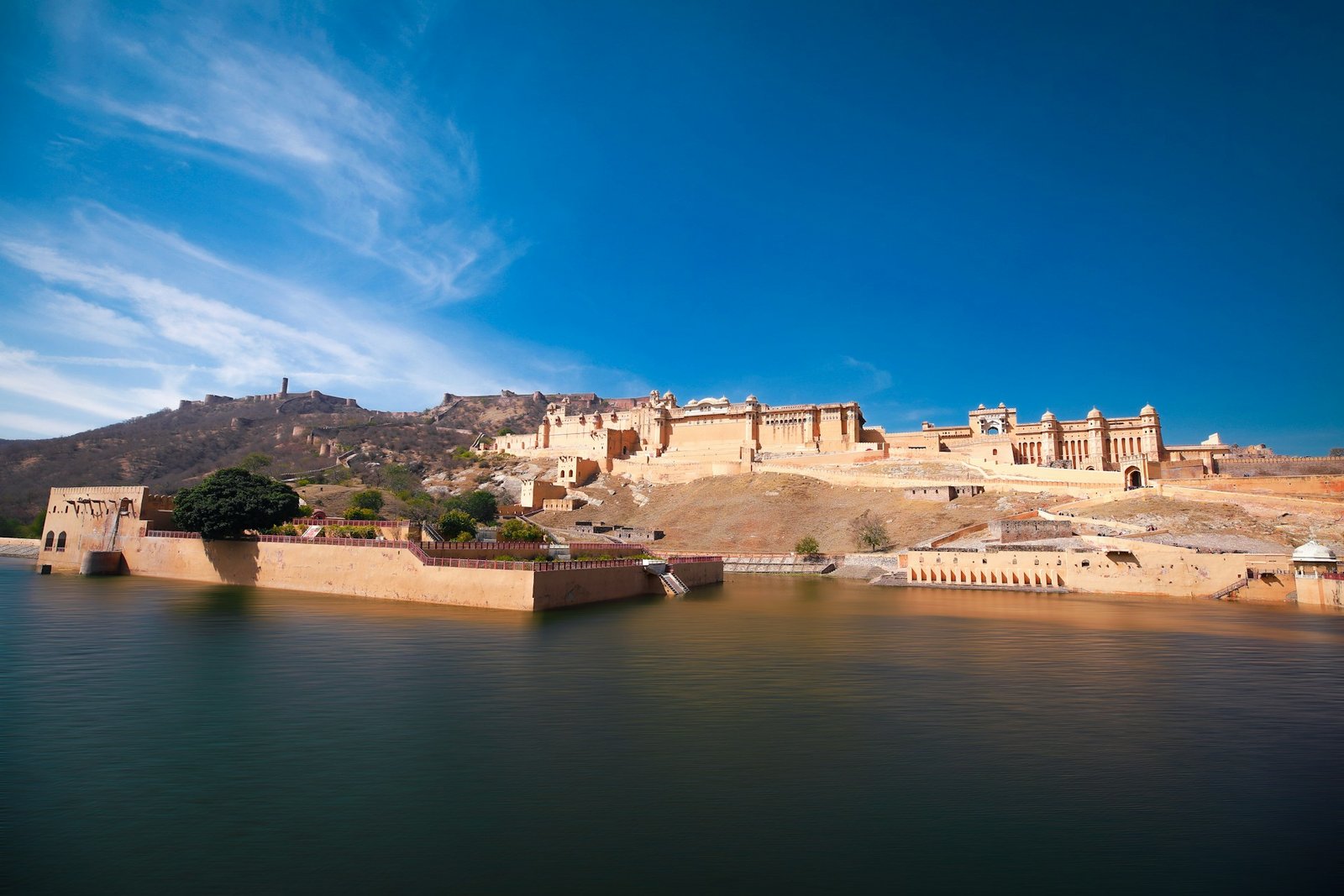
Amer Fort Jaipur (also called Amber Fort) is one of the most celebrated monuments of Rajasthan, located just 11 km from Jaipur. Rising majestically above Maota Lake, this UNESCO World Heritage Site combines Rajput valor, Mughal elegance, and artistic brilliance. Built mainly in red sandstone and white marble, the fort is laid out on four courtyards, each with a unique purpose, from royal ceremonies to the private life of the queens.
History of Amer Fort
- Early rulers: Amer was originally a Meena stronghold, later captured by the Kachwaha Rajputs.
- Founder of the fort: Raja Man Singh I (1589–1614), one of Emperor Akbar’s most trusted generals, began construction in 1592.
- Expansion: Later rulers, including Jai Singh I and Jai Singh II, expanded and embellished the fort.
- Capital shift: The fort remained the capital until 1727, when Sawai Jai Singh II founded Jaipur.
Today, Amer Fort forms a twin complex with Jaigarh Fort, connected by a secret subterranean passage built for protection in times of war.
Architectural Brilliance
Amer Fort is a fusion of Rajput and Mughal styles, featuring:
- Red sandstone & marble exteriors for strength and beauty
- Intricate frescoes & mirror work inside palaces
- Mughal-style gardens (Chahar Bagh) with water channels
- Fortified walls & gates symbolizing Rajput military might

Layout of Amer Fort – The Four Courtyards
The fort is organized into four main courtyards, each serving a distinct royal function:
- First Courtyard – Jaleb Chowk & Sila Devi Temple
- Parade ground for armies returning from war
- Sacred Sila Devi Temple with legends of Raja Man Singh I
- Second Courtyard – Diwan-i-Aam (Hall of Public Audience)
- Platform with 27 colonnades
- The King heard petitions from his subjects here
- Third Courtyard – Jai Mandir, Sheesh Mahal & Sukh Niwas
- Ganesh Pol (royal gateway)
- Mirror Palace (Sheesh Mahal) with dazzling reflections
- Sukh Niwas – natural cooling system with water cascades
- Fourth Courtyard – Zenana & Palace of Man Singh I
- Secluded quarters of queens and attendants
- Palace of Man Singh I – the oldest part of Amer Fort
Temples, Gates & Special Features
The Sun Temple at Konarak is not just an architectural marvel but also a treasure trove of symbolic entrances, carvings, and detailed features that reflect the artistic genius of 13th-century Odisha. Each gate and special motif within the temple complex holds cultural, spiritual, and architectural significance, creating a layered experience for visitors.
Ganesh Pol – The Frescoed Gateway to Private Palaces
One of the most visually striking features is the Ganesh Pol, a gateway decorated with vibrant frescoes that once led into the inner private palaces of the temple complex. The name itself is derived from Lord Ganesha, the remover of obstacles, symbolically blessing every devotee or royal who entered. The frescoes depict mythological scenes, divine beings, and floral patterns, showcasing the mastery of Odia artisans in blending religion with artistry. This gateway was not only functional but also symbolic, marking the transition from the outer spaces into the sacred royal quarters.
Lion Gate (Singh Pol) – Security with Symbolism
Perhaps the most iconic entrance to the Sun Temple is the Lion Gate (Singh Pol). Guarded by imposing sculptures of lions crushing elephants, this gate was both a security barrier and a symbolic protector of the sanctum. The zigzag passage design was intentional, serving as a defensive mechanism to slow down intruders, while spiritually it represented the idea that the path to divine truth is never straightforward. The carvings and massive sculptures at Singh Pol continue to impress with their sheer power and artistry.
Tripolia Gate – Three Directions, One Passage
Another unique feature is the Tripolia Gate, which opens into three directions. This architectural element symbolized the interconnectedness of the universe and reflected the temple’s role as a cosmic diagram or mandala. The gate allowed controlled movement of pilgrims and processions, while also serving as a symbolic representation of the past, present, and future. Its design reflects advanced planning in temple architecture, balancing practicality with philosophical depth.
Magic Flower Carving – Hidden Marvels in Marble
Among the most enchanting details of Konarak is the Magic Flower Carving, an intricately designed marble artwork filled with hidden motifs. At first glance, it appears to be a simple floral design, but on closer inspection, different figures—such as a lotus, a fish, a conch, and even human forms—emerge depending on the angle of viewing. This piece highlights the ingenuity of the craftsmen, who embedded layers of symbolism into a single carving, allowing each visitor to interpret it differently. The magic flower is not only an artistic masterpiece but also a philosophical metaphor for the multiple dimensions of truth hidden in plain sight.
Together, these gates and special features elevate the Sun Temple Konarak beyond being just a religious site. They transform it into a living museum of symbolism, engineering brilliance, and artistic wonder, leaving every visitor in awe of Odisha’s golden era of temple construction.
- Ganesh Pol: Frescoed gateway leading to private palaces
- Lion Gate (Singh Pol): Security gate with zigzag entry
- Tripolia Gate: Opens into three directions
- Magic Flower Carving: A marble artwork with hidden motifs
Visiting Information
- Location: Amer, Rajasthan (11 km from Jaipur)
- Timings: 8:00 AM – 5:30 PM (daily)
- Best Season: October – March (pleasant weather)
- Tickets: ₹100 (Indians), ₹500 (Foreigners) approx.
- Getting There: Jeep rides are recommended (ethical alternative to elephant rides).

Nearby Attractions
- Jaigarh Fort (connected via secret passage)
- Jagat Shiromani Temple (dedicated to Krishna)
- Panna Meena ka Kund (stepwell)
- Jal Mahal (on the way from Jaipur to Amer)
UNESCO World Heritage Recognition
In 2013, Amer Fort, along with five other Hill Forts of Rajasthan (Chittorgarh, Kumbhalgarh, Jaisalmer, Ranthambore, and Gagron), was declared a UNESCO World Heritage Site.
Why Visit Amer Fort?
Amer Fort is not just an architectural marvel; it is a living museum of Rajputana life. From grand ceremonies in Jaleb Chowk to the secretive Zenana quarters, every courtyard tells a story of power, devotion, and opulence.


0 Comment